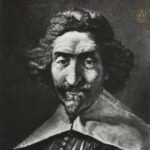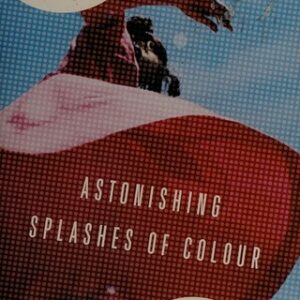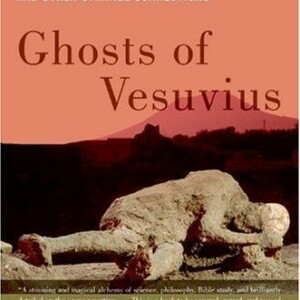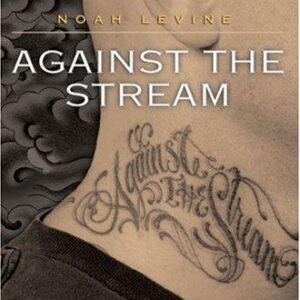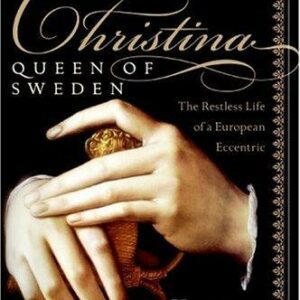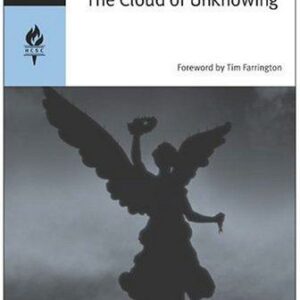The Portable Cervantes
$20.00
| Title | Range | Discount |
|---|---|---|
| Trade Discount | 5 + | 25% |
- Description
- Additional information
Description
Contains Don Quixote, in Samuel Putnam’s acclaimed translation, substantially complete, with editorial summaries of the omitted passages; two ‘Exemplary Novels, ‘Rinconete and Cortadillo’ and ‘Man of Glass’; and ‘Foot in the Stirrup,’ Cervantes’s extraordinary farewell to life from The Troubles of Persiles and Sigismunda. Introduction
Suggested Readings in English
THE INGENIOUS GENTLEMAN, DON QUIXOTE DE LA MANCHA
Editor’s Note
Part OnePrologue
DON QUIXOTE’S BACKGROUND AND FIRST SALLY (Chapters I-VI):
I. Which treats of the station in life and the pursuits of the famous gentleman, Don Quixote de la Mancha. II. Which treats of the first sally that the ingenious Don Quixote made from his native heath. III. Of the amusing manner in which Don Quixote had himself dubbed a knight. IV. Of what happened to our knight when he sallied forth from the inn. V. In which is continued the narrative of the misfortune that befell our knight. VI. Of the great and diverting scrutiny which the curate and the barber made in the library of our ingenious gentleman.
THE SECOND SALLY: ADVENTURE OF THE WINDMILLS, ENCOUNTER WITH THE BISCAYAN (Chapters VII-X):
VII. Of the second sally of our good knight, Don Quixote de la Mancha. VIII. Of the good fortune which the valorous Don Quixote had in the terrifying and never-before-imagined adventure of the windmills, along with other events that deserve to be suitably recorded. IX. In which is conccluded and brought to an end the stupendous battle between the gallant Biscayan and the valiant Knight of La Mancha. X. Of the pleasing conversation that took place between Don Quixote and Sancho Panza, his squire.
A PASTORAL INTERLUDE (Chapters XI-XIV):
From XI. Of what happened to Don Quixote in the company of certain goatherds. From XIII. In which is brought to a close the story of the shepherdress Marcela, along with other events. From XIV. In which are…other unlooked-for happenings.
MORE ADVENTURES ALONG THE WAY (Chapters XV-XXII):
XV. In which is related the unfortunate adventure that befell Don Quixote when he encountered certain wicked Yanguesans. XVI. Of what happened to the ingenious gentleman in the inn which he imagined was a castle. XVII. Wherein is continued the account of the innumerable troubles that the brave Don Quixote and his good squire Sancho Panza endured in the inn, which, to his sorrow, the knight took to be a castle. XVIII. In which is set forth the conversation that Sancho Panza had with his master, Don Quixote, along with other adventures deserving of record. XIX. Of the shrewd things that Sancho Panza said to his master and the adventure that happened to him in connection with a dead body, along with other famous events. XX. Of an adventure such as never was seen or heard of, which was completed by the valorous Don Quixote de la Mancha with less peril than any famous knight in all the world ever incurred in a similar undertaking. XXI. Which treats of the high and richly rewarded adventure of Mambrino’s helmet, together with other things that happened to our invincible knight. XXII. Of how Don Quixote freed many unfortunate ones who, much against their will, were being taken where they did not wish to go.
DON QUIXOTE’S PENANCE AND SANCHO’S EMBASSY TO DULCINEA (Chapters XXIII-XXIX):
From XXIII. Of what happened to the famous Don Quixote in the Sierra Morena, which is one of the rarest adventures related in this true history. From XXV. Which treats of the strange things that happened to the valiant Knight of La Mancha in the Sierra Morena and of his imitation of Beltenebros’s penance.
THE RETURN TO THE VILLAGE (Chapters XXX-LII):
From XXX. Which treats of…matters very pleasant and amusing. XXXI. Of the delectable conversation that took place between Don Quixote and Sancho Panza, his squire, together with other events. XXXV. In which the “Story of the One Who Was Too Curious for His Own Good” is brought to a close, and in which is related the fierce and monstrous battle Don Quixote waged with certain skins of red wine. From XLIII. In which is related…other strange events that took place at the inn. XLIV. In which are continued the unheard-of adventures at the inn. XLV. In which the diSancho Panzaute over Mambrino’s helmet and the packsaddle is finally settled, with other events that in all truth occurred. XLVI. Wherein is concluded the notable adventure of the troopers, together with an account of the great ferocity of our good knight, Don Quixote. XLVII. Of the strange manner in which a Sancho Panzaell was laid on Don Quixote de la Mancha, together with other remarkable occurrences. XLVIII. In which the canon continues his discourse on the subject of books of chivalry, with other matters worthy of his intelligence. XLIX. Of the shrewd conversation that Sancho Panza had with his master, Don Quixote. L. Of the weighty argument that took place between Don Quixote and the canon. From LII. …The rare adventure of the penitents, which the knight by the sweat of his brow brought to a happy conclusion.
Part TwoPREPARATIONS FOR THE THIRD SALLY (Chapters I-VII):
I. Of the conversation which the curate and the barber had with Don Quixote concerning his malady. II. Which treats of the notable quarrel that Sancho Panza had with Don Quixote’s niece and housekeeper, along with other droll happenings. III. Of the laughable conversation that took place between Don Quixote, Sancho Panza, and the bachelor Sanson Carrasco. IV. Wherein Sancho Panza answers the bachelor’s questions and removes his doubts, together with other events that are worthy of being known and set down. V. Of the shrewd and droll remarks that passed between Sancho Panza and his wife, Teresa Panza, with other matters of a pleasant nature that deserve to be recorded. VI. Of what took place between Don Quixote and his niece and housekeeper, which is one of the most important chapters in the entire history. VII. Of what passed between Don Quixote and his squire, with other very famous incidents.
THE “ENCHANTMENT” OF DULCINEA (Chapters VIII-X):
VIII. Wherein is related what happened to Don Quixote as he went to see his lady, Dulcinea del Toboso. IX. A chapter in which is related what will be found set forth in it. X. Wherein is related the ingenuity that Sancho Panza diSancho Panzalayed by laying a Sancho Panzaell upon the lady Dulcinea, with other events as outlandish as they are true.
TO THE ROAD AGAIN (Chapters XI-XXIX):
XI. Of the strange adventure that befell the valiant Don Quixote in connection with the cart or wagon of the Parliament of Death. From XIV. Wherein is continued the adventure of the Knight of the Wood. From XVI. Of what happened to Don Quixote upon his meeting with a prudent gentleman of La Mancha. XVII. Wherein Don Quixote’s unimaginable courage reaches its highest point, together with the adventure of the lions and its happy ending. From XXII. Wherein is related the great adventure of the Cave of Montsinos in the heart of La Mancha, which the valiant Don Quixote brought to a triumphant conclusion. XXIII. Of the amazing things which the incomparable Don Quixote told of having seen in the deep Cave of Montesinos, an adventure the grandeur and impossible nature of which have caused it to be regarded as apocryphal. From XXIV. Wherein are related trifling matters… XXVVIII. Of things that, Benengeli says, the reader will come to know if he reads attentively.
WITH THE DUKE AND DUCHESS (Chapters XXX-XLI):
From XXXII. Concerning…incidents, some serious and some amusing. XXXIII. Of the delightful conversation which the ducheess and her waiting women had with Sancho Panza, worth reading and worth noting. From XXXV. Wherein is continued the information that Don Quixote received concerning Dulcinea’s disenchantment, with other astonishing incidents. XXXVI. Wherein is related the weird and never-before-imagined adventure of the Distressed Duenna, otherwise known as the Countess Trifaldi, together with a letter that Sancho Panza wrote to his wife, Teresa Panza. XLI. Of the coming of Clavinleño, with the conclusion of this long-drawn-out adventure.
SANCHO’S GOVERNMENT (Chapters XLII-LV):
XLII. Of the advice which Don Quixote gave Sancho Panza before the latter set out to govern his island, with other well-considered matters. XLIII. Of the further advice which Don Quixote gave to Sancho Panza. XLIV. How Sancho Panza was taken away to be governor, and the strange adventure that befell Don Quixote in the castle. XLV. Of how the great Sancho took possession of his island and of the way in which he began to govern. XLVII. Wherein is continued the account of how Sancho Panza deported himself in his government. XLIX. Of what happened to Sancho Panza as he made the rounds of his island. L. Wherein is set forth who the enchanters and executioners were who Sancho Panzaanked the duenna and pinched and scratched Don Quixote, together with what happened to the page who carried the letter to Teresa Panza, Sancho Panza’s wife. LI. Of the course of Sancho Panza’s government, with other entertaining matters of a similar nature. From LII. (The CorreSancho Panzaondence of Teresa Panza). LIII. Of the troublous end and conclusion of Sancho Panza’s government. From LV. Of the things that happened to Sancho…
THE LAST ADVENTURES (Chapters LVI-LXXIV):
From LXII. Which deals with…things that cannot be left untold. From LXIV. Which treats of the adventure that caused Don Quixote the most sorrow of all those that have thus far befallen him. LXXI. Of what befell Don Quixote and his squire Sancho on the way to their village. LXXIV. Of how Don Quixote fell sick, of the will that he made, and of the manner of his death.
TWO EXEMPLARY NOVELS
Prologue
Rinconete and CortadilloEditor’s Note
Man of GlassEditor’s Note
“FOOT IN THE STIRRUP”: Cervantes’ Farewell to Life (from The Troubles of Persiles and Sigismunda)
Editor’s Note
Dedication
Prologue
NOTES
To Don QuixoteTo Two Exemplary NovelsTo “Foot in the Stirrup” Miguel De Cervantes Saavedra was born in Spain in 1547 to a family once proud and influential but now fallen on hard times. His father, a poor barber-surgeon, wandered up and down Spain in search of work. Educated as a child by the Jesuits in Seville, the creator of Don Quixote grew up to follow the career of a professional soldier. He was wounded at Lepanto in 1571, captured by the Turks in 1575, imprisoned for five years, and was finally rescued by the Trinitarian friars in 1580. On his return to Spain he found his family more impoverished than ever before. Supporting his mother, two sisters, and an illegitimate daughter, he settled down to a literary career and had hopes of becoming a successful playwright, but just then the youthful Lope de Vega entered triumphantly to transform the Spanish theatre by his genius. Galatea, a pastoral romance, was published in 1585, the year of Cervantes’ marriage to Catalina de Palacios y Salazar Vozmediano. But it did not bring him an escape from poverty, and he was forced to become a roving commissary for the Spanish armada. This venture, which led to bankruptcy and jail, lasted for fifteen years. Although he never knew prosperity, Cervantes did gain a measure of fame during his lifetime, and Don Quixote and Sancho Panza were known all over the world. Part I of Don Quixote was published in 1605; in 1613, his Exemplary Novels appeared, and these picaresque tales of romantic adventure gained immediate popularity. Journey to Parnassas, a satirical review of his fellow Spanish poets, appeared in 1614, and Part II of Don Quixote in 1615 as well as Eight Plays and Eight Interludes. Miguel de Cervantes died on April 23, 1616, the same day as the death of Shakespeare–his English contemporary, his only peer. US
Additional information
| Weight | 22.6 oz |
|---|---|
| Dimensions | 1.9200 × 5.0500 × 7.7500 in |
| ISBN-13 | |
| Imprint | |
| Format | |
| Author | |
| Audience | |
| BISAC | |
| Subjects | religious books, play, Mythology, collection, historical fiction, literary fiction, graphic novels, essays, theatre, american literature, adaptation, fantasy books, plays, political books, classic literature, classic books, LCO008000, satire, historical novels, adventure books, viking portable library, classic, Literature, philosophy, religion, series, politics, adventure, historical, greek, war, english, folklore, comedy, school, romance, drama, fantasy, romance books, humor, graphic novel, 17th century, 18th century, 19th century, 20th century |


